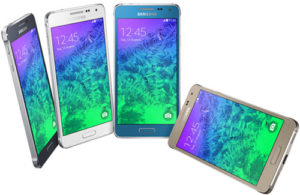
Eyeing an October release, One Laptop per Child (OLPC) announced Monday that it has authorized the mass production of the final beta version of its rugged XO laptop aimed at children in developing countries.
Featuring the AMD Geode LX processor, OLPC’s XO B4 laptops are designed to withstand even the harshest environmental conditions, including use outdoors in the rain, sitting in a puddle of water after a downpour, or in a cloud of dust. The display is fully readable in bright sunlight, and the case features a WiFi antenna design for superior WiFi range as well as protection from falls as high as five feet.
“A computer designed for Western office environments simply won’t be able to withstand the conditions found in much of Africa, Asia and South America,” explained Walter Bender, OLPC president of software and content. “Further, children engaged in learning have a different set of needs from a laptop than an office worker.”
Final Tests
The computers can be powered by numerous alternative power sources, including a pull cord, solar panel or solar-powered multi-battery charger. They use less than one watt of power when in use as an e-book, and can operate for more than 12 hours on their battery.
Developers, hardware experts, OLPC technical volunteers and some of the pilot schools around the world already using OLPC’s older B2 machines will put the B4 through a final round of testing. In addition to a faster, lower-power AMD chip than the B2 had, the B4 also adds more memory — bringing the total to 256 megabytes of SDRAM (synchronous dynamic random access memory) — and more NAND Flash, with a full gigabyte.
Collaborative Effort
The B4 machines are the result of a collaboration including OLPC, AMD, Brightstar, BT, Citigroup, Chi Mei, eBay, Google, Marvell, News Corp., Nortel, Quanta Computer, Red Hat, SES Astra, Underwriters Laboratories, the global open source community and — just recently — Intel.
“Since the inception of the XO laptop more than two years ago, AMD has been committed to helping the One Laptop per Child program succeed,” said Gustavo Arenas, corporate vice president for high-growth markets and innovations at AMD.
“We are proud to serve as a technology partner to such a noble and life-affecting project,” Arenas added. “The B4 machine paves the way for a final XO laptop that will change the lives of millions of children — a mission that compliments AMD’s own 50×15 Initiative, whose goal is to enable 50 percent of the world’s population with affordable, accessible Internet connectivity and computing capabilities by the year 2015.”
‘Clock-Stopping Hot’
“I had the opportunity to use a B4 last week, and the technology is amazing,” Wayan Vota, editor of One Laptop Per Child News, told LinuxInsider. “It’s clock-stopping hot.”
Although widely referred to as the “(US)$100 laptop,” the actual price at last mention was $176 per unit in quantities of 250,000, Vota said. Single-unit sales are not available.
“There is a lot of debate in technology circles about the cost of bringing laptop computers into the developing world,” said Bender. “But the real debate shouldn’t be centered on cost — it should be about design.”
OLPC also appears to be poised to miss its reported goal of shipping a million laptops before year’s end, Vota added.
More Needed?
Given that OLPC is already a year behind its original schedule, “everyone who’s been following the story is very skeptical about the ship date” as well, added Lee Felsenstein, a spokesperson for the Fonly Institute, which works to bring computing to “ordinary people.”
Indeed, while OLPC may have performed numerous tests using the laptop in various harsh environmental conditions, it has not done nearly enough testing of the computer in its intended context as part of an educational plan, Felsenstein told LinuxInsider. The result, he added, is that “an awful lot more should be done — well over a year’s worth of work,” he said.
Now that Intel has joined OLPC’s board of directors, the organization needs a “get-well plan,” Felsenstein concluded.
Porn Scandal
Evidence of that need may have surfaced in the last few days with reports that downloaded pornographic images have been found on the XO laptops in use by children in Nigeria.
OLPC could not be reached for comment, but “that’s some publicity they could do without,” Mukul Krishna, global manager of Frost and Sullivan’s digital media practice, told LinuxInsider.
While OLPC Nigeria has announced that it will begin adding filters to the machines, Vota said, few expect that to be a complete fix. “They will help to a certain extent, but not totally,” Krishna said. “Adolescents are very inquisitive, and the way many search engines are structured, it’s not too difficult to stumble on something you shouldn’t be watching.”
“I believe the Nigerian press was just looking for good storyline to make headlines,” Vota asserted.
“The use of computers to look at porn is social problem, not a hardware one,” he added. “Children have to be taught what’s good and what’s bad, based on the cultural context.”



















































